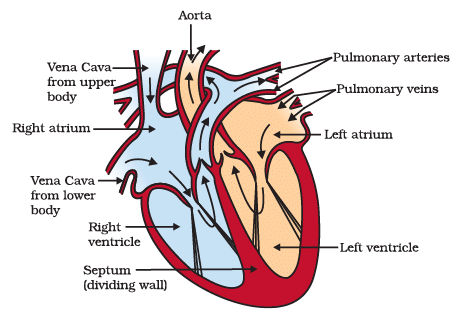Unit Test: Life Processes | Science Class 10 PDF Download
Time: 1 Hour
Maximum Marks: 30
Instructions:
- Attempt all questions.
- Question numbers 1 to 5 carry 1 mark each .
- Question numbers 6 to 8 carry 2 marks each.
- Question numbers 9 to 11 carry 3 marks each.
- Question numbers 12 and 13 carry 5 marks each.
Q1. Why is diffusion insufficient to meet the oxygen requirements of multicellular organisms like humans? (1 Mark)
(a) Oxygen diffuses too slowly
(b) Only lungs can diffuse oxygen
(c) All cells are not in direct contact with the environment
(d) Cells do not require oxygen
Q2. Which enzyme in saliva helps in the digestion of starch? (1 Mark)
(a) Pepsin
(b) Lipase
(c) Amylase
(d) Trypsin
Q3. The energy currency of a cell is: (1 Mark)
(a) DNA
(b) Glucose
(c) ATP
(d) Protein
Q4. The site of gaseous exchange in human lungs is: (1 Mark)
(a) Bronchioles
(b) Alveoli
(c) Trachea
(d) Diaphragm
Q5. Which of the following statements is true about autotrophic nutrition? (1 Mark)
(a) Organisms depend on others for food
(b) Organisms digest food externally
(c) Organisms prepare food from CO₂ and water using sunlight
(d) Organisms consume complex organic matter only
Q6. State two differences between autotrophic and heterotrophic nutrition. (2 Marks)
Q7. How is the small intestine designed to absorb digested food efficiently? (2 Marks)
Q8. What is the role of hydrochloric acid in the stomach? (2 Marks)
Q9. Describe the three main steps involved in the process of photosynthesis. (3 Marks)
Q10. What are the different products formed during aerobic and anaerobic respiration? Give examples. (3 Marks)
Q11. Explain the process of nutrition in Amoeba. (3 Marks)
Q12. Describe the human digestive system and explain how digestion occurs in the stomach and small intestine. (5 Marks)
Q13. Answer the following questions based on the diagram given below: (5 Marks)

(i) Label the four chambers of the heart in the diagram.
(ii) What is the function of the valves shown in the heart diagram?
(iii) Which side of the heart pumps oxygenated blood to the body, and which side pumps deoxygenated blood to the lungs?
(iv) Describe the pathway of blood through the heart starting from the right atrium.
(v) Why does the left ventricle have a thicker muscular wall compared to the right ventricle?
|
80 videos|569 docs|80 tests
|
FAQs on Unit Test: Life Processes - Science Class 10
| 1. What are the basic life processes essential for the survival of living organisms? |  |
| 2. How do plants perform photosynthesis and what is its significance in life processes? |  |
| 3. What role does respiration play in the life processes of organisms? |  |
| 4. Can you explain the importance of excretion in living organisms? |  |
| 5. What is the difference between growth and reproduction in life processes? |  |

















